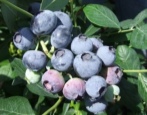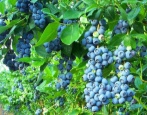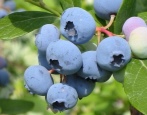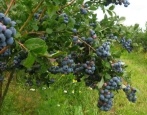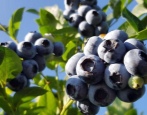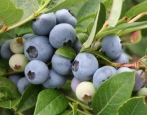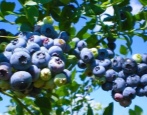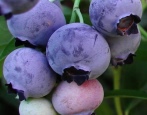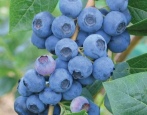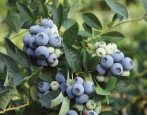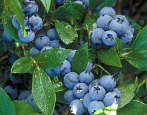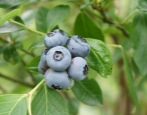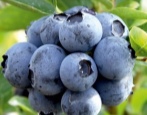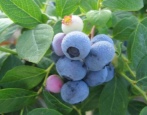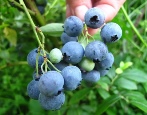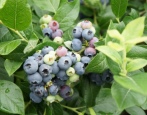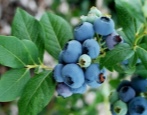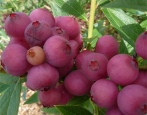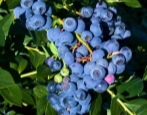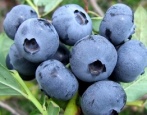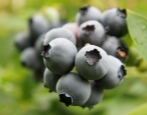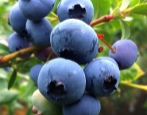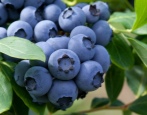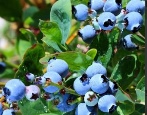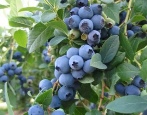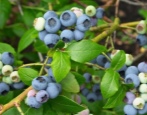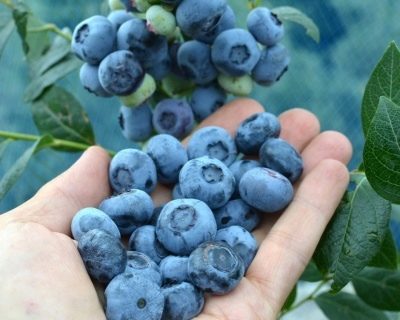
- Name synonyms: Chandler, Chandler
- Ripening terms: late
- Growth type: tall
- Bush height, m: 1,5
- Taste: good, sweet and sour
- Yield: high
- Average yield: 6-8 kg per bush
- Fruit size: large
- Fruit shape: rounded, slightly compressed on both sides
- Fruit color: blue
Chandler is one of the most famous blueberry varieties. This plant gained its popularity thanks to its large, beautiful berries and their exquisite aroma.
Description of the variety
Chandler is a hybrid and tall blueberry variety bred in Europe in 1994. Deciduous perennial grows up to one and a half meters, sometimes the growth mark stops at 1.7 m. Bushes are round, erect. They are characterized by spreading, quickly form numerous lateral shoots. Young stems are colored in light green shades, and the shoots, which are already several years old, are covered with a gray-burgundy bark.
The plant is abundantly leafy with large foliage. Smooth and rigid leaf blades have a thick petiole and a sharp tip, a pronounced vein in light colors runs in the center. The foliage looks very decorative. In warm periods, it is bright green, incredibly juicy, but in the fall it acquires a purple color.
The flowers are small in size, very similar in appearance to water lilies. The buds are most often light pink, but the blossoming flower is white. The flowering is very beautiful and abundant. During this period, blueberries look the most interesting.
Fruit characteristics
Chandler berries are about 20 millimeters in diameter. The average weight is 2.5 grams, the largest berries reach 5 grams. The fruits are beautiful, round, compressed on both sides. The blue skin does not change its color as the berries ripen, it is thin, with a slight waxy bloom.
The pulp is firm and has a striking light purple color. It contains a large number of tiny brown seeds. Ripe blueberries do not fall off the bushes, but the variety is not famous for its high keeping quality. In just a couple of days, the crop becomes unusable. In addition, it makes no sense to transport this variety, since on the way the berries crumple and begin to flow.
Taste qualities
Chandler berries are very juicy, sweet and sour. The sweetness is felt more than the sourness. The fruits also have a delicate and subtle aroma. Since the berries are rarely transported, it is recommended to use them immediately. Some of the fruits are usually eaten fresh, the rest are used to prepare jam, compote, wine and liqueurs. Berries can also be used as a pie filling. Many people freeze them to last for the entire cold period.
Ripening and fruiting
Chandler is distinguished by its late flowering and fruiting dates. This blueberry blooms in the first month of summer and ripens in August. It should be borne in mind that the berries on the bushes will not appear together, so the fruiting will be stretched. This is usually August and September.
Yield
Chandler will give the first good harvests of blueberries for the 5th season. The average yield is 6 to 8 kilograms per bush. This variety bears fruit annually.
Growing regions
Chandler blueberry is widespread in Belarus. As for Russia, shrubs grow here in regions with moderately cold winters. They can be found very often in the Moscow region. However, gardeners of the Urals and Siberia are also trying to grow Chandler. Many such experiments are crowned with success.
Self-fertility and the need for pollinators
Pollination in this variety occurs crosswise. It is enough to plant a few bushes on the site and attract bees to get a decent harvest.
Growing and care
When planting blueberry seedlings, they are guided by the weather conditions in the region. The procedure can be carried out both in the fall and in the spring. The age of the seedling is from 1 to 3 years, while it is better to buy specimens with closed roots. When planting bushes, one and a half meters of free space is left between them. The growth point must remain on the ground surface. The final stages of planting are abundant irrigation and mulching with needles or peat.
Chandler, despite being a drought tolerant variety, cannot produce good and tasty berries without the required amount of liquid. Blueberry bushes usually need 10 liters of water every week. This dose must be halved. Water the plants in the absence of the sun. If the drought is too severe, sprinkling can be arranged on the bushes. But the procedure is also carried out at a time when direct sunlight does not fall on the blueberries.
Fertilizing the crop is advisable for the second season. It should be borne in mind that blueberries do not tolerate organic matter well. It is better to choose mineral complex dressings. In early spring, the soil is enriched with nitrogen, for this you can take, for example, urea. And when the fruits begin to form, the plants are fed with a stronger fertilizer, consisting of the following components:
superphosphate - 115 grams;
potassium sulfate - 40 grams;
ammonium sulfate - 95 grams.
Having finished planting the plant, it must be cut off by one third. Then the bushes are not touched for two years, the only exception can be sanitary pruning as needed. Then the formation of the bushes can be continued. First of all, the branches that have fallen to the ground are removed, as they can become a source of disease. Before the buds swell, it is necessary to have time to remove the branches growing horizontally and branching from the vertical shoot. And also cut off branches that grow in the wrong direction. At the age of 6 years, the bush can be cut at the root to rejuvenate it.

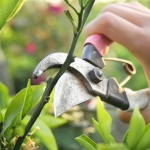
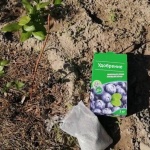
Disease and pest resistance
Chandler is quite good at resisting fungal diseases. They are rare in this variety. But the bushes love beetles and leafworms. Insecticides are used against both insects. And from birds that love to peck berries, they put nets with small cells.
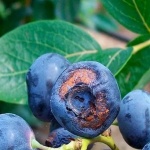
Winter hardiness and the need for shelter
Chandler winters very well, because its frost resistance is -37 degrees. However, in Siberia and the Urals, gardeners still prefer to protect plants from the cold.Shrubs are abundantly mulched with spruce branches, and then bent to the ground and covered with covering material. All plants 4 years old and older are water-charged in the fall.

Location and soil requirements
Blueberry Chandler will bear fruit 2-3 times worse even with the slightest shade. In addition, the growth of the shrub will slow down. Therefore, the place chosen for blueberries should be as warm and light as possible. The culture is not afraid of a draft; on the contrary, air circulation should be very active.
Chandler is very picky about the soil composition. Like most blueberry varieties, this one prefers sour soil. In addition, the earth should be light, loose. It should contain a lot of peat and sand. It is noteworthy that Chandler can be planted even in swampy lands. Constant hydration is only good for this plant.
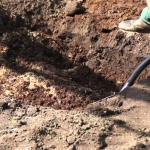
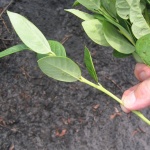
Review overview
Chandler deserves very high marks from farmers. For home cultivation, this variety has become an ideal option. To get large and tasty fruits, you just need to water the plant regularly, and do not forget to feed it a couple of times. Pruning is very easy.
But the gardeners also noted the disadvantages. They argue that Chandler is a blueberry exclusively for himself. Trying to preserve and sell it is impractical, because on the way the berries deteriorate in a matter of minutes due to the thin skin.
